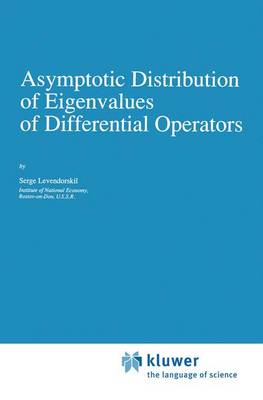Mathematics and Its Applications
2 primary works
Book 53
Asymptotic Distribution of Eigenvalues of Differential Operators
by Serge Levendorskii?
Published 30 September 1990
One service mathematics has rendered the 'Et moi, ..., si j'avait su comment en revenir, je n'y serais point alle.' human race. It has put common sense back Jules Verne where it belongs, on the topmost shelf next to the dusty canister labelled 'discarded n- sense'. The series is divergent; therefore we may be able to do something with it. Eric T. Bell O. Heaviside Mathematics is a tool for thought. A highly necessary tool in a world where both feedback and non- linearities abound. Similarly, all kinds of parts of mathematics serve as tools for other parts and for other sciences. Applying a simple rewriting rule to the quote on the right above one finds such statements as: 'One service topology has rendered mathematical physics ...'; 'One service logic has rendered com- puter science ...'; 'One service category theory has rendered mathematics ...'. All arguably true. And all statements obtainable this way form part of the raison d'etre of this series.
Book 258
0.1 The partial differential equation (1) (Au)(x) = L aa(x)(Dau)(x) = f(x) m lal9 is called elliptic on a set G, provided that the principal symbol a2m(X, ) = L aa(x) a lal=2m of the operator A is invertible on G X (~n \ 0); A is called elliptic on G, too. This definition works for systems of equations, for classical pseudo differential operators ("pdo), and for operators on a manifold n. Let us recall some facts concerning elliptic operators. 1 If n is closed, then for any s E ~ , is Fredholm and the following a priori estimate holds (2) 1 2 Introduction If m > 0 and A : C=(O; C') -+ L (0; C') is formally self - adjoint 2 with respect to a smooth positive density, then the closure Ao of A is a self - adjoint operator with discrete spectrum and for the distribu- tion functions of the positive and negative eigenvalues (counted with multiplicity) of Ao one has the following Weyl formula: as t -+ 00, (3) n 2m = t / II N+-(1,a2m(x,e))dxde T*O\O (on the right hand side, N+-(t,a2m(x,e))are the distribution functions of the matrix a2m(X,e) : C' -+ CU).

